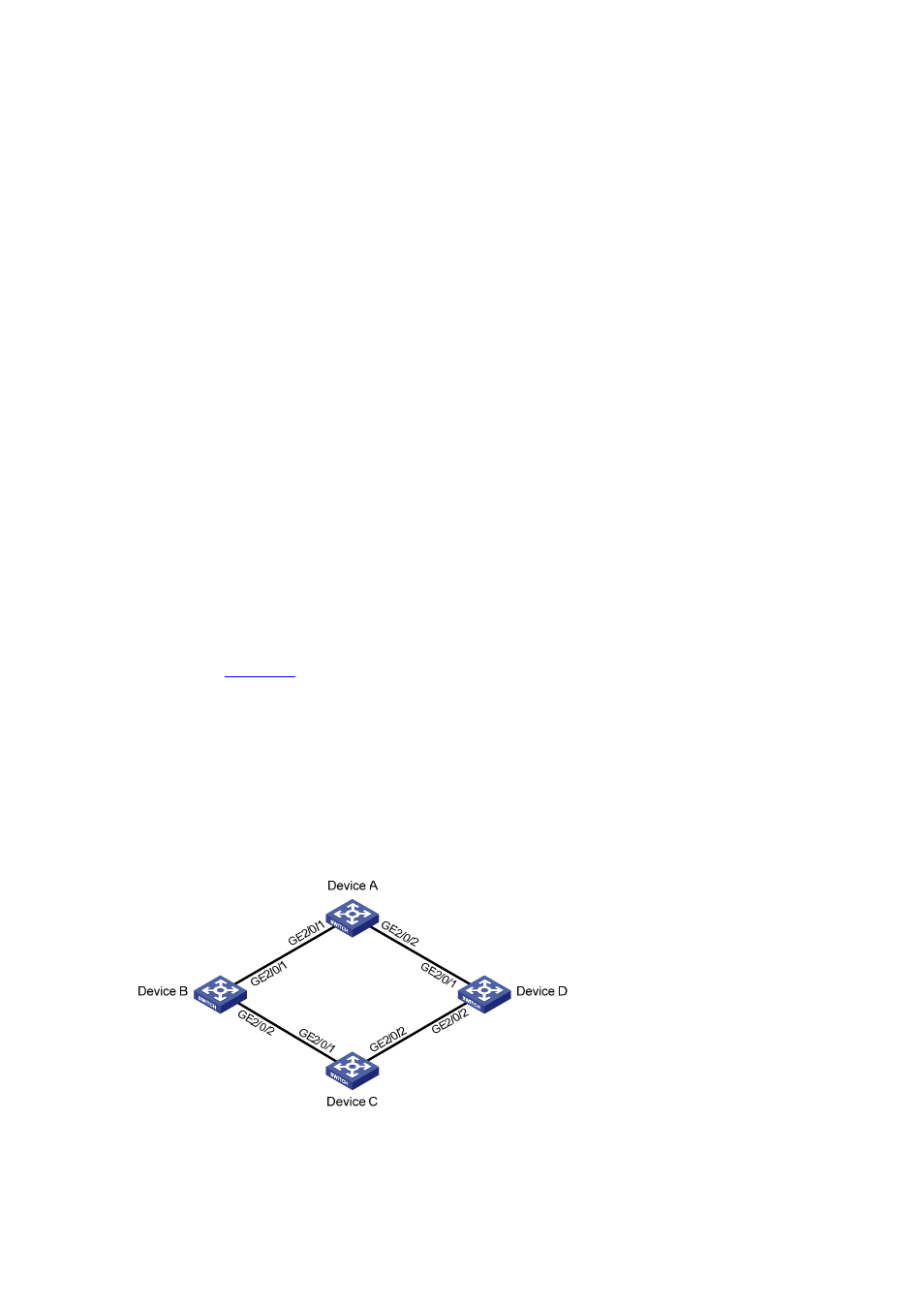Network requirements, Configuration procedure – H3C Technologies H3C S7500E Series Switches User Manual
Page 123

8-52
# Display the smart link group configuration on Device C.
[DeviceC] display smart-link group 1
Smart link group 1 information:
Device ID: 000f-e23d-5af0
Preemption mode: NONE
Preemption delay: 1(s)
Control VLAN: 1
Protected VLAN: Reference Instance 1
Member Role State Flush-count Last-flush-time
-----------------------------------------------------------------------------
GigabitEthernet2/0/1 MASTER ACTVIE 5 16:37:20 2009/02/21
GigabitEthernet2/0/2 SLAVE STANDBY 1 17:45:20 2009/02/21
You can use the display smart-link flush command to display the flush messages received on each
device. For example:
# Display the flush messages received on Device B.
[DeviceB] display smart-link flush
Received flush packets : 5
Receiving interface of the last flush packet : GigabitEthernet2/0/3
Receiving time of the last flush packet : 16:25:21 2009/02/21
Device ID of the last flush packet : 000f-e23d-5af0
Control VLAN of the last flush packet : 1
Multiple Smart Link Groups Load Sharing Configuration Example
Network requirements
As shown in
:
z
Device C is a smart link device, and Device A, Device B, and Device D are associated devices.
Traffic of VLANs 1 through 200 on Device C are dually uplinked to Device A by Device B and
Device D.
z
Implement dual uplink backup and load sharing on Device C: traffic of VLANs 1 through 100 is
uplinked to Device A by Device B; traffic of VLANs 101 through 200 is uplinked to Device A by
Device D.
Figure 8-3 Network diagram for multiple smart link groups load sharing configuration
Configuration procedure
1) Configuration on Device C
